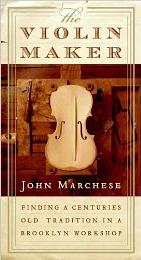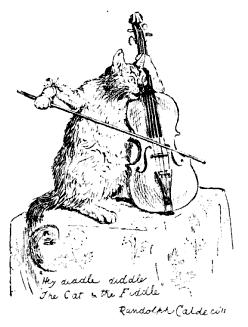I’m an engineer by trade. Engineers usually do a lot of research before starting a new project, but I’m one that likes to dive in and work on what I think will be the most challenging parts right away. I do the research along the way when I know what questions I can’t answer already.
That’s not the way to learn to play the cello, I think. Playing any instrument is a lot different than designing a machine. You have to start with the easiest parts. And you don’t just get them done and move on, you have to do them over and over. For me, this seems the hardest adjustment. I realize I haven’t tried to learn any significant motor skill since I took on bike riding as a little boy. The challenges I go after are mental ones, where I can work on the problem in my head – out of sight – and then just do the thing. The cello isn’t an engineering problem at all. It’s like learning to walk or talk, and it’s slow going – especially for someone over fifty! I just have to practice the simple tunes day by day and trust that the motions are working their way into my subconscious.
 In the meantime, the engineer is still alive and the cello has opened a new world of inquiry. When I’m too tired to face the instrument with bow in hand, I read books about it. The world of stringed instruments is as esoteric as any art and craft can get, and abounding in obscure lore and legend. The Violin Maker, by John Marchese, is a fascinating look at that world. Marchese quotes violinist Eugene Ysaye, “The violin is a poet whose enigmatic nature may only be divined by the elect.” The elect are those who play the instruments well and those who make them well. Marchese weaves a fascinating story of both, as he follows modern luthier Sam Zygmuntowicz’ work on a violin commissioned by Eugene Drucker of the Emerson Quartet. Along the way, he explores the lore of Stradivari and even explores Cremona, searching for reasons why a few of the luthiers of that Italian town have become so renowned.
In the meantime, the engineer is still alive and the cello has opened a new world of inquiry. When I’m too tired to face the instrument with bow in hand, I read books about it. The world of stringed instruments is as esoteric as any art and craft can get, and abounding in obscure lore and legend. The Violin Maker, by John Marchese, is a fascinating look at that world. Marchese quotes violinist Eugene Ysaye, “The violin is a poet whose enigmatic nature may only be divined by the elect.” The elect are those who play the instruments well and those who make them well. Marchese weaves a fascinating story of both, as he follows modern luthier Sam Zygmuntowicz’ work on a violin commissioned by Eugene Drucker of the Emerson Quartet. Along the way, he explores the lore of Stradivari and even explores Cremona, searching for reasons why a few of the luthiers of that Italian town have become so renowned.
Marchese debunks some of the mythology about Stradivari and his less famous contemporaries, yet preserves the mystery. He believes Strad had no real “secret” but was indeed a very careful and consistent craftsman, who had meticulously experimented with tiny adjustments to the design to make it more perfect. The biggest change he wrought in the form of the violin was flattening the arch of the belly, allowing it to vibrate more freely, increasing the violin’s volume and projection. This change was not appreciated until performance in large venues became more common in the 19th century. Ironically, most of the Strads that exist today were significantly modified in that century, by tilting the neck back and making it of uniform thickness to facilitate shifting, and by increasing the string tension to make the sound brighter and louder. Stradivari’s body form was now preferred, but the violins look and sound different today then when he made them.
It is really remarkable that all standard violins are virtually identical in shape and construction. The great differences in tonal quality are almost entirely due to the source and selection of the wood used for the “belly” and the back, and the carving of those pieces to the ideal thickness profile. Modern violin makers almost always copy one of the best specimens of those few old masters. Skill and patient care in the copying, along with the ability to make the small adjustments necessary for each unique piece of wood, are the marks of a true modern master.
 Marchese refers often to a much older volume, Violin-Making: As it was and is, by Edward Heron-Allen, first published in 1884. I found it at my library, but you can read it on Google Books. This book goes deep into the history of the violin, the leading old makers, and the details of their work. This is the source if you want to learn to distinguish the ff holes of Bergonzi from those of Guarnerius, or to cut the points of the purfling in the unique way of Stradivari.
Marchese refers often to a much older volume, Violin-Making: As it was and is, by Edward Heron-Allen, first published in 1884. I found it at my library, but you can read it on Google Books. This book goes deep into the history of the violin, the leading old makers, and the details of their work. This is the source if you want to learn to distinguish the ff holes of Bergonzi from those of Guarnerius, or to cut the points of the purfling in the unique way of Stradivari.
There are a number of good modern books on violin making that would be most helpful if you wanted to actually make a violin, but these two gems were the most interesting to me. I’ll certainly never own a cello of an old master, but understanding the instrument’s construction and history just makes this new adventure more satisfying for me. Or maybe I’m just trying to compensate with knowledge for my lack of skill!
By the way, all this talk about violin making is not a departure from the cello at all. The instruments are nearly identical in form – the cello is just a scaled up violin with the main difference in proportion being the thickness of the body. The methods of construction are the same. And Stradivari made some great cellos too.

Jean Paul Viennois
February 20, 2017 at 4:06 am
I just happen on this topic through your wonderful tutorial on your film transfer post. By the way, congratulations for this fantastic achievment.
I am not a musician myself but my chidren and grand children all are and I have four cellists among them, so cello is not quite a stranger to me.
But what I just want to mention is taht I saw a violin fitted with the same keys as your cello in Ottavalo (Ecuador) when we visited a charango maker. My son tried it and it was not that bad.
There is a lot of traditions in violin making some justified some being just prejuges.
Do you know the experiments conducted by Pablo Casals. Several cellos were played by good cellist (among which Casals himself) behind a curtain, the cellis not knowing himself which cello he palyed. Notes were given by juges. The results were astonishing: some contemporary instruments competing equally with famous Strads and other
jimmymc
February 20, 2017 at 7:07 am
Thank you for your nice comment. I have read about the Casals blind test. Sound and hearing are quite complex, and we may not understand fully what makes one instrument sound ‘better’ than another. But most of that can be measured objectively, and there is no reason a modern maker cannot match the sound of an old instrument, or improve on it, for that matter. It is rather like the passion for vacuum tube audio equipment!